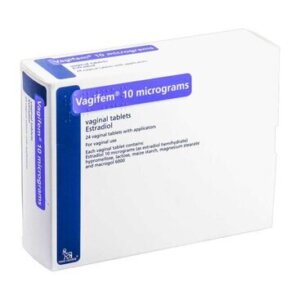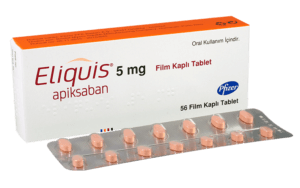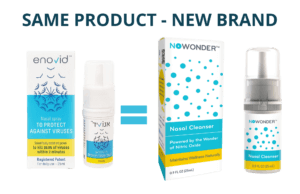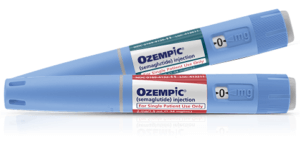
For many women, maintaining intimacy after transitioning into menopause can feel like a challenge. Sexual intimacy often holds deep significance in relationships, yet the physical changes that come at this time of life may add unexpected stress. These changes can sometimes lead to ongoing challenges, such as reduced desire, difficulty with arousal or orgasm, and discomfort during intimacy. This distress is the hallmark of what has been labelled female sexual dysfunction (FSD). The International Menopause Society is working to increase awareness of FSD and to provide a framework for practitioners to address sexual medicine concerns.
This distress is the hallmark of female sexual dysfunction (FSD). The International Menopause Society is working to increase awareness of FSD and to provide a framework for practitioners to address sexual medicine concerns. The publication “Recommendations on women’s midlife health and menopause hormone therapy” reviews the care process for female sexual well-being following menopause, identifies clinical signs and symptoms, and ultimately determines the best available biopsychosocial therapies.
Unfortunately, there is still a prevalent belief that such menopausal changes are a normal and inevitable part of aging. However, it is essential to realize that there is reason to challenge these outdated views and understand that many simple and affordable solutions directly address these problems.
What Happens in the Vagina During the Menopausal Shift?
Menopause marks the end of a woman’s reproductive years, and with the decrease in female hormone production, various changes inside and around the vagina occur. The most significant are:
- Vaginal dryness is one of the most common symptoms, affecting around 50-60% of menopausal women. When hormone levels are high, they help keep vaginal tissues moist and elastic. Women may experience dryness with their decline, leading to discomfort – especially during sexual activity.
- Vaginal atrophy (also known as genitourinary syndrome of menopause – GSM.) It involves the thinning and inflammation of the vaginal walls. This condition can result in pain during intercourse and urinary distress.
- A healthy, pre-menopausal vagina typically maintains an acidic pH balance, which creates a protective barrier against infections. Post-menopause, the pH may become more alkaline, increasing susceptibility to urinary tract infections (UTIs) and other issues.
While hormonal shifts during menopause can sometimes bring changes in sexual desire, other aspects of life might play a role as well. Relationship dynamics, stress, and underlying medical conditions can all contribute to how someone feels during this time. Alongside the physical changes, the emotional side of this transition deserves just as much attention and care.
Strategies for maintaining vaginal health
Understanding the way that the transition into menopause produces a cascade of physical changes allows for proactive measures to maintain vaginal health and sexual fulfillment:
- Over-the-counter lubricants and moisturizers can help alleviate dryness, making sexual activity more comfortable. There are products specifically designed for vaginal use. Among the most highly recommended are Vagifem (estradiol) vaginal suppositories, which deliver a natural form of estrogen. This medication can treat menopause symptoms and reduce urgency or irritation during urination. As an OTC medication, it does not require a prescription.
- In many cases, especially in the early years of menopause, women may benefit from Hormonal Replacement Therapy (HRT), which can help alleviate symptoms and restore vaginal health. There are no cures for GSM, but by restoring estrogen levels with safe medications, it can be possible to reduce the symptoms substantially. Consulting with a healthcare provider is essential, as HRT may not be suitable for everyone. Combined HRT (including progesterone with estrogen) is usually required for women with an intact womb to reduce the risk of hyperplasia and adenocarcinoma (cancer) of the endometrium.
- Localized estrogen therapy is a specialized form of HRT that can effectively treat vaginal atrophy. One of the best examples is Premarin Vaginal Cream (conjugated estrogens,) which provides a targeted delivery route directly onto the tissues in and around the vagina. Unlike oral HRT, which affects the entire body, vaginal creams focus on delivering gentle, targeted relief directly to vaginal tissues. By providing higher concentrations of estrogen right where it’s needed, they can ease the discomfort of vaginal atrophy without impacting the rest of the body.
- Regular sexual activity helps maintain blood flow to the vaginal tissues, keeping them healthy and elastic.
- Healthy lifestyle choices, like drinking water regularly, maintaining a balanced diet, and engaging in regular exercise, all contribute to overall well-being and support sexual health.
- Finding a healthcare provider that specializes in menopause can provide individualized care and treatment options, including physical therapy when needed, tailored for sexual health.
What is Female Sexual Interest/Arousal Disorder (FSIAD)?
Female sexual dysfunction is a recognized condition listed in the Diagnostic and Statistical Manual of Mental Disorders, Fifth Edition (DSM-5). Beyond the common health concerns that can arise at any age, menopause introduces its own set of experiences, especially during premenopause and the later stages of full menopause. This phase has taken on greater importance as women now live longer than ever before. With life expectancy extending well into the eighties, many women who spend roughly 25 years in their fertile and childbearing years now spend 35 years or more in menopause. This extended phase of life has brought issues like FSAID into sharper focus, making it an important area of attention and care.
Understanding the functions and impact of estrogen, progesterone, and testosterone
-
Estrogen
Beyond simply regulating the menstrual cycle, estrogen plays a vital role in many bodily functions, including maintaining bone density, controlling cholesterol levels, and keeping the skin elastic. Its decline affects not only reproductive health but overall health.
In early perimenopause, estrogen levels can fluctuate widely with increases and decreases, ranging from 10-30% above and below average levels. In late perimenopause, estrogen levels drop to around 35-60% below normal levels in the years just preceding menopause.
Finally, estrogen levels may drop dramatically to approximately 40-60% below premenopausal levels around the last menstrual period. In menopausal women, estrogen levels can be even 90% below what was expected in fertile years.
Progesterone
While the primary role of progesterone is in the reproductive system, which is essential for preparing the uterine lining for a potential pregnancy, progesterone also has a calming effect on the brain and contributes to mood stabilization. Its decline may contribute to the mood swings frequently experienced during perimenopause.
Throughout the years of perimenopause, progesterone levels decline as ovulation becomes irregular. They may drop by approximately 25-50% below average levels during the reproductive years. Finally, a sharp drop to near zero occurs in sync with the cessation of ovulation.
Testosterone
Testosterone is often thought of as a male hormone, but it also plays an important role in women’s reproductive health and sexual function. As women move through their reproductive years, levels of androgens naturally decline. These hormones are key to supporting sexual motivation, so a decrease can sometimes lead to a condition known as hypoactive sexual desire disorder (HSDD). This can affect aspects of intimacy, including arousal, desire, the ability to reach orgasm, and even cause discomfort during intercourse.
During her years of fertility, generally from around the mid-twenties, a woman’s testosterone levels decline steadily. Still, they level off once menopause is reached and may even start to rise slowly.
When do menopause hormonal changes begin?
Perimenopause typically begins in the mid to late forties but can start as early as the late thirties. It can last anywhere from four to as long as ten years.
The physical timeline
- Estrogen is primarily responsible for regulating the menstrual cycle. Levels can fluctuate widely during perimenopause, and this inconsistency can lead to irregular periods. With the decline in estrogen production comes the most characteristic symptoms of menopause, including vaginal dryness and mood changes.
- As ovulation becomes less regular, the production of progesterone also decreases. Progesterone levels drop even more steeply since the hormone is no longer needed to prepare the uterus for the implantation of a fetus.
- In many cases, perimenopause presents the most marked symptoms.
- Menopause is defined as the absence of menstrual periods for 12 consecutive months.
Menopause occurs twelve months after the final menstrual period. In the US, menopause, on average, sets in at the age of 51, according to the National Institute on Aging, and continues for the rest of a woman’s life.
FAQs
Which vaginal lubricants work best to relieve dryness and discomfort?
Water-based personal vaginal lubricants that include estradiol/estrogen can improve dyspareunia and relieve vaginal dryness and improve vaginal health. They can also increase sexual satisfaction in menopausal women. The lubricants have also been found not to alter the vaginal microbiome, so the risk of UTI and other infections is not elevated.
What is the average timeline for menopause?
There is no such thing as a standard duration for menopause. It would depend on a woman’s genes, her prior lifestyle factors such as smoking and recreational drugs or alcohol consumption, general health and many other unique influences. Some women barely notice the transition beyond the cessation of periods, and others suffer from some or all of the common symptoms to greater or lesser degrees, for the rest of their lives.
How long does it take to see results from the estradiol cream in Vagifem?
Topical lubricants and moisturizers such as Vagifem, which contains estrogen cream, address the root cause of vaginal atrophy, whereas other OTC creams only minimize them. Restoring vaginal health, as well as returning of the vulvar and urethral tissues to their premenopausal state, will start gradually, and the total improvement should be evidenced by four to twelve weeks.
What can I use to moisturize my private area?
Natural oils like olive, coconut, or almond oil can work as vaginal moisturizers. However, they shouldn’t be used with condoms or sex toys since oil can damage them. Products like Vaseline, body lotion, or massage oil should also be avoided inside the vagina.
What causes vaginal dryness?
Vaginal dryness happens mostly because of lower levels of estrogen. This hormone sustains vaginal health by helping with natural moisture, flexibility, and pH balance. Other things, like some medical issues or personal hygiene habits, can also cause dryness.
Can I put Vaseline on my private area?
For severe dryness and irritation, a hydrating moisturizer might work better. Petroleum jelly, like Vaseline®, should not be used as a moisturizer because it can irritate the vaginal area and increase the chance of developing an infection.
















